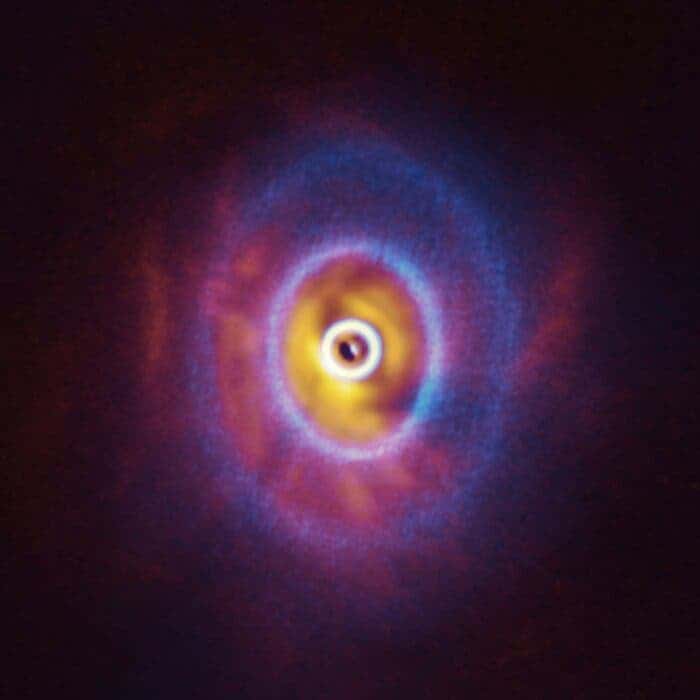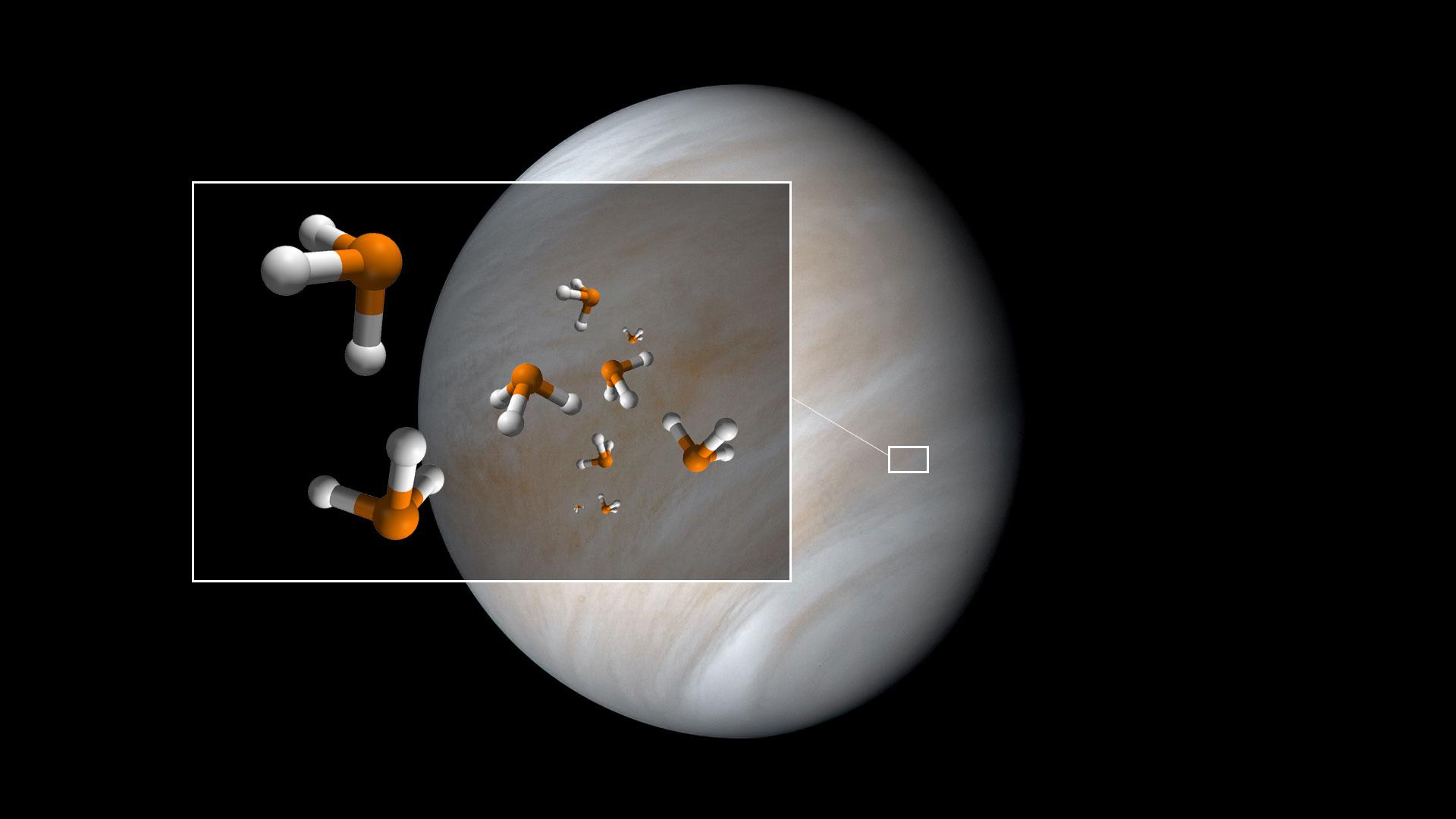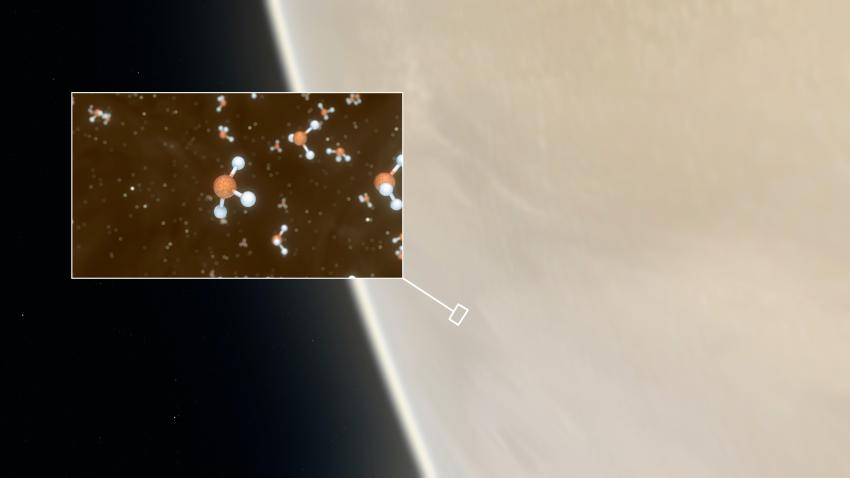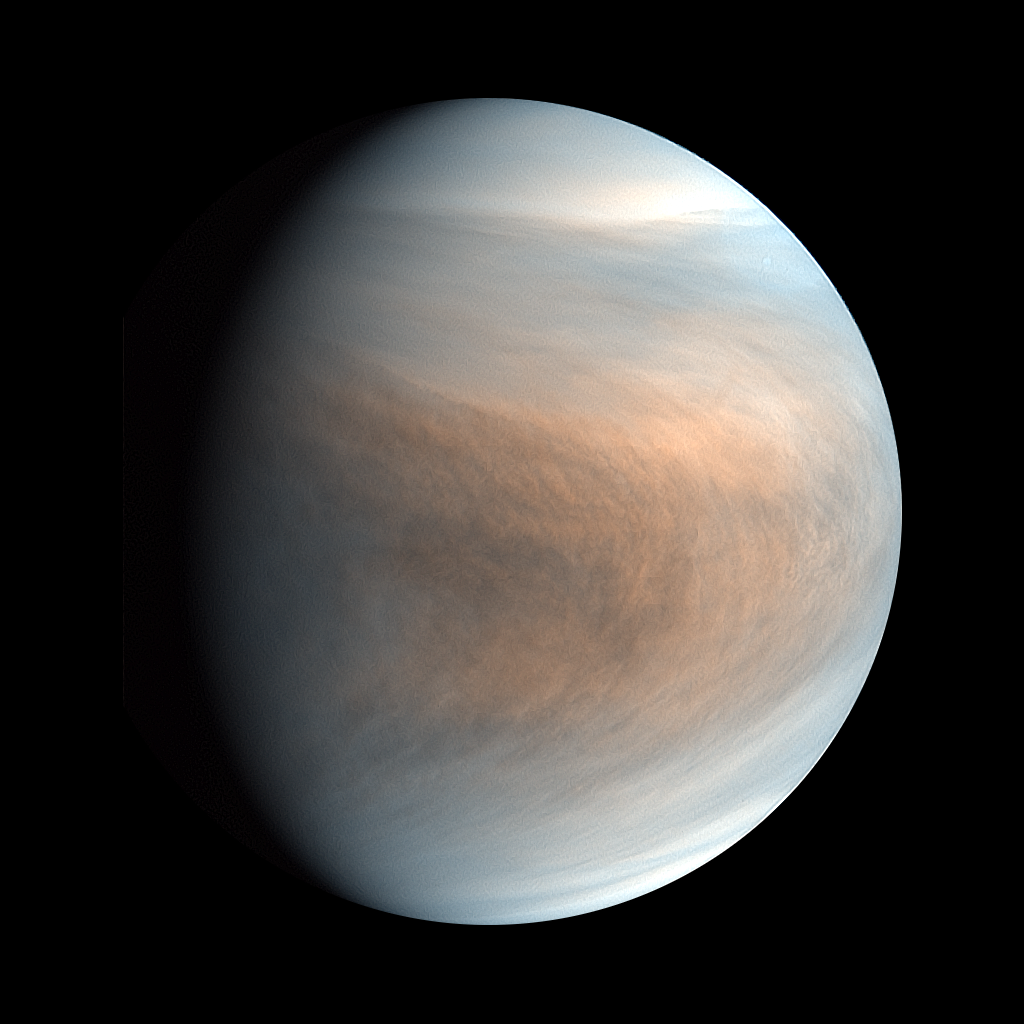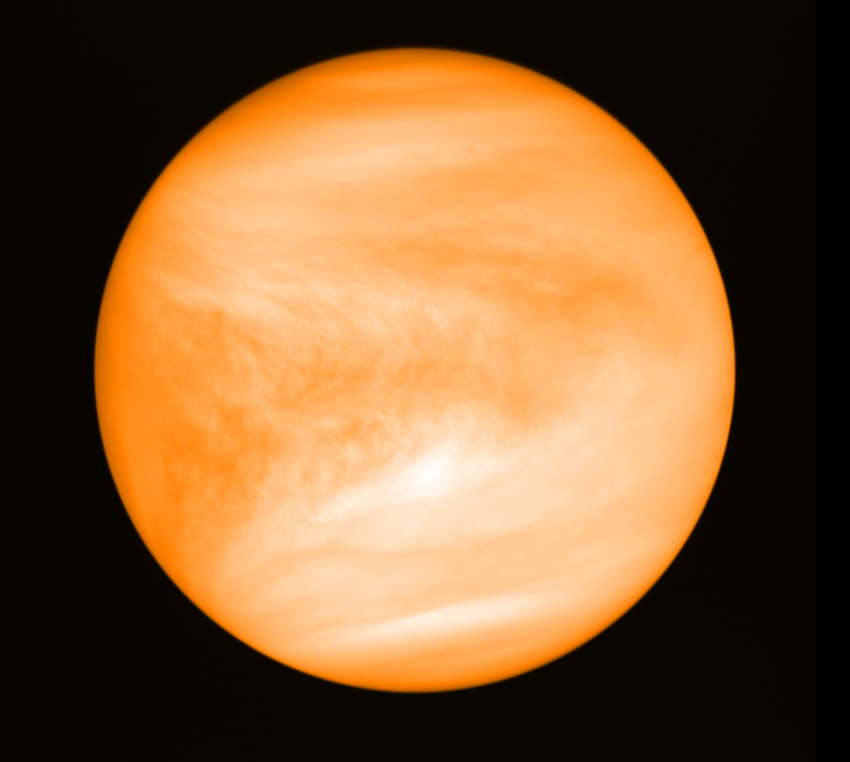- Mensagens
- 13.254
- Reações
- 26.558
- Pontos
- 1.549
Fusão de dois buracos negros em um só com massa 142 vezes maior que a do Sol é captada pela 1ª vez
Simulação matemática foi capaz de traduzir as ondas gravitacionais emitidas pela colisão, e reproduzir o fenômeno. Veja o vídeo.
Por G1
02/09/2020 09h00 Atualizado há 30 minutos
/i.s3.glbimg.com/v1/AUTH_59edd422c0c84a879bd37670ae4f538a/internal_photos/bs/2020/w/n/mwtYyMTfSOpcc6k2djGQ/241684.jpg)
Ilustração feita a partir de uma simulação numérica mostra os dois buracos negros em espiral antes de se fundir, emitindo ondas gravitacionais — Foto: N. Fischer, H. Pfeiffer, A. Buonanno (Instituto de Física Gravitacional Max Planck), com colaboração do Simulating eXtreme Spacetimes (SXS).
Pesquisadores dos Estados Unidos detectaram o momento em que dois buracos negros se fundiram e formaram um novo de massa intermediária. Uma simulação matemática foi capaz de traduzir as ondas gravitacionais emitidas pela colisão, e reproduzir o fenômeno.
Foi a primeira vez que cientistas identificaram a formação de um buraco negro de massa intermediária, com 142 vezes a massa do Sol, segundo dois estudos publicados em colaboração pelas revistas "Astrophyiscal Journal Letters" e "Physical Review Letters" nesta quarta-feira (2).

Cientistas detectam fusão entre dois buracos negros a partir de das ondas gravitacionais
A aproximação dos dois buracos negros se parece com uma dança (veja o vídeo) e é resultado da atração dos campos gravitacionais. Momentos antes de se fundirem em um só, eles se movem em espiral até o momento da colisão e da formação do novo buraco negro.
Esse tipo de buraco negro, de tamanho intermediário, fica entre os dois tipos já conhecidos e descritos anteriormente deste fenômeno: os buracos negros estelares e os supermassivos:
"Um dos grandes mistérios da astrofísica é como se formam os buracos negros supermassivos", disse em nota Berry Kalogera, um dos autores do estudo.
/i.s3.glbimg.com/v1/AUTH_59edd422c0c84a879bd37670ae4f538a/internal_photos/bs/2020/N/m/5Lbu8OSBA4sTQzunFP1w/241681.png)
Ilustração feita a partir de uma simulação numérica mostra os dois buracos negros em espiral antes de se fundir, emitindo ondas gravitacionais — Foto: N. Fischer, H. Pfeiffer, A. Buonanno (Instituto de Física Gravitacional Max Planck), com colaboração do Simulating eXtreme Spacetimes (SXS)
Os buracos negros são uma enorme quantidade de massa concentrada em um espaço muito reduzido. Seu campo gravitacional é tão forte que ele atrai para si tudo o que se aproxima dele, inclusive a luz.
Segundo o pesquisador, a busca por um buraco negro intermediário era feita há anos. Os cientistas sabiam que existia uma lacuna entre os dois tipos conhecidos anteriormente, mas nunca haviam registrado esse fenômeno.
/i.s3.glbimg.com/v1/AUTH_59edd422c0c84a879bd37670ae4f538a/internal_photos/bs/2019/z/K/1lQtb3Q4a1BGqqyZYRWA/98336842-1.jpg)
O laboratório LIGO Louisiana que detectou ondas gravitacionais — Foto: NSF/LIGO
Ondas gravitacionais
A descoberta dos pesquisadores foi feita a partir dos estudos de ondas gravitacionais captadas em 21 de maio de 2019 pelas máquinas do Advanced LIGO, um instrumento astronômico capaz de "escutar" a frequência emitida por estes fenômenos espaciais.
Ondas gravitacionais são encontradas no Universo quando há uma mudança repentina na gravidade em algum ponto do espaço. Isso pode acontecer, por exemplo, após a colisão de dois buracos negros, é mais ou menos parecido com as ondulações provocadas ao se arremessar uma pedra na água.
O cientista alemão Albert Einstein estimou a existência dessas ondas em 1916 mas apenas 100 anos depois uma equipe pesquisadores foi capaz de registrá-las com os sensores de mais de 4 km de comprimento do Advanced LIGO.

 g1.globo.com
g1.globo.com
Coloquei o video q tem um videozinho mixuruca e não sei se vai aparecer colando a noticia
Simulação matemática foi capaz de traduzir as ondas gravitacionais emitidas pela colisão, e reproduzir o fenômeno. Veja o vídeo.
Por G1
02/09/2020 09h00 Atualizado há 30 minutos
/i.s3.glbimg.com/v1/AUTH_59edd422c0c84a879bd37670ae4f538a/internal_photos/bs/2020/w/n/mwtYyMTfSOpcc6k2djGQ/241684.jpg)
Ilustração feita a partir de uma simulação numérica mostra os dois buracos negros em espiral antes de se fundir, emitindo ondas gravitacionais — Foto: N. Fischer, H. Pfeiffer, A. Buonanno (Instituto de Física Gravitacional Max Planck), com colaboração do Simulating eXtreme Spacetimes (SXS).
Pesquisadores dos Estados Unidos detectaram o momento em que dois buracos negros se fundiram e formaram um novo de massa intermediária. Uma simulação matemática foi capaz de traduzir as ondas gravitacionais emitidas pela colisão, e reproduzir o fenômeno.
Foi a primeira vez que cientistas identificaram a formação de um buraco negro de massa intermediária, com 142 vezes a massa do Sol, segundo dois estudos publicados em colaboração pelas revistas "Astrophyiscal Journal Letters" e "Physical Review Letters" nesta quarta-feira (2).

Cientistas detectam fusão entre dois buracos negros a partir de das ondas gravitacionais
A aproximação dos dois buracos negros se parece com uma dança (veja o vídeo) e é resultado da atração dos campos gravitacionais. Momentos antes de se fundirem em um só, eles se movem em espiral até o momento da colisão e da formação do novo buraco negro.
Esse tipo de buraco negro, de tamanho intermediário, fica entre os dois tipos já conhecidos e descritos anteriormente deste fenômeno: os buracos negros estelares e os supermassivos:
- Um buraco negro estelar é formado a partir da explosão conhecida como supernova, quando uma estrela com muita massa "morre" e entra em colapso.
- O maior de todos é o buraco negro supermassivo, que pode ter a massa milhões de vezes maior que a do Sol, mas muito compacta.
"Um dos grandes mistérios da astrofísica é como se formam os buracos negros supermassivos", disse em nota Berry Kalogera, um dos autores do estudo.
/i.s3.glbimg.com/v1/AUTH_59edd422c0c84a879bd37670ae4f538a/internal_photos/bs/2020/N/m/5Lbu8OSBA4sTQzunFP1w/241681.png)
Ilustração feita a partir de uma simulação numérica mostra os dois buracos negros em espiral antes de se fundir, emitindo ondas gravitacionais — Foto: N. Fischer, H. Pfeiffer, A. Buonanno (Instituto de Física Gravitacional Max Planck), com colaboração do Simulating eXtreme Spacetimes (SXS)
Os buracos negros são uma enorme quantidade de massa concentrada em um espaço muito reduzido. Seu campo gravitacional é tão forte que ele atrai para si tudo o que se aproxima dele, inclusive a luz.
Segundo o pesquisador, a busca por um buraco negro intermediário era feita há anos. Os cientistas sabiam que existia uma lacuna entre os dois tipos conhecidos anteriormente, mas nunca haviam registrado esse fenômeno.
"Agora temos a prova de que os buracos negros de massa intermediária existem", escreveu Kalogera.
/i.s3.glbimg.com/v1/AUTH_59edd422c0c84a879bd37670ae4f538a/internal_photos/bs/2019/z/K/1lQtb3Q4a1BGqqyZYRWA/98336842-1.jpg)
O laboratório LIGO Louisiana que detectou ondas gravitacionais — Foto: NSF/LIGO
Ondas gravitacionais
A descoberta dos pesquisadores foi feita a partir dos estudos de ondas gravitacionais captadas em 21 de maio de 2019 pelas máquinas do Advanced LIGO, um instrumento astronômico capaz de "escutar" a frequência emitida por estes fenômenos espaciais.
Ondas gravitacionais são encontradas no Universo quando há uma mudança repentina na gravidade em algum ponto do espaço. Isso pode acontecer, por exemplo, após a colisão de dois buracos negros, é mais ou menos parecido com as ondulações provocadas ao se arremessar uma pedra na água.
O cientista alemão Albert Einstein estimou a existência dessas ondas em 1916 mas apenas 100 anos depois uma equipe pesquisadores foi capaz de registrá-las com os sensores de mais de 4 km de comprimento do Advanced LIGO.

Fusão de dois buracos negros em um só com massa 142 vezes maior que a do Sol é captada pela 1ª vez
Simulação matemática foi capaz de traduzir as ondas gravitacionais emitidas pela colisão, e reproduzir o fenômeno. Veja o vídeo.
Coloquei o video q tem um videozinho mixuruca e não sei se vai aparecer colando a noticia


